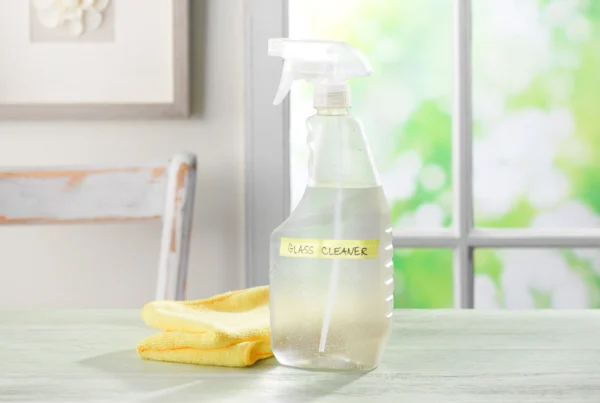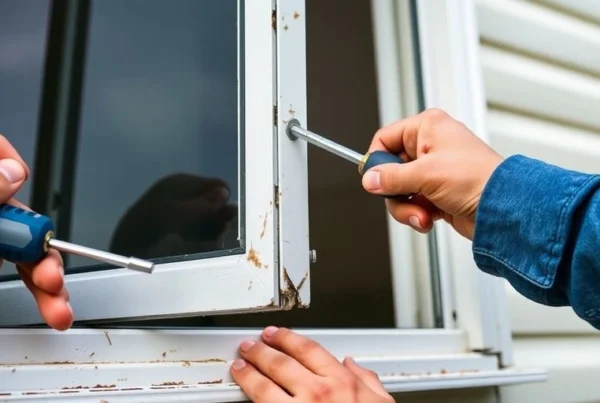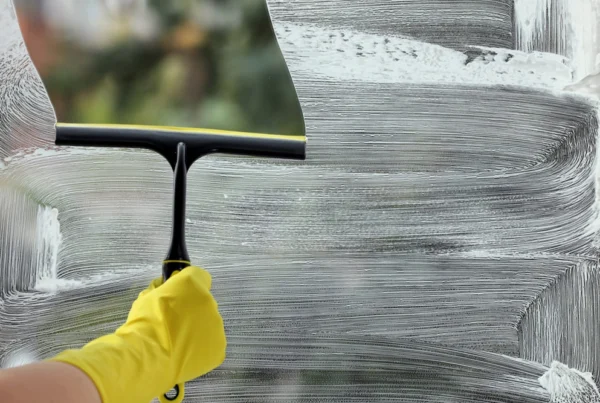Dusty Blinds? Here’s How to Clean Horizontal Blinds the Right Way
Window blinds are essential to any home, offering privacy, temperature control, and a polished look. They’re often the unsung heroes of interior design sleek, functional, and versatile across décor styles. However, they’re also dust traps. Unlike routine chores like vacuuming or doing laundry, blinds are easy to overlook until the dust, grime, or sticky fingerprints make them impossible to ignore. At that point, you may be wondering: How to Clean Horizontal Window Blinds?
The answer depends on the type of blinds you own and the amount of buildup you’re dealing with. Whether you’re dealing with vinyl, aluminum, faux wood, or fabric blinds, cleaning them doesn’t have to be difficult. With the right tools and a few time-tested techniques, you can refresh your blinds without hassle. At ProClean, our House Cleaning Vancouver team is committed to helping homeowners clean smarter, not harder, with expert tips and high-quality products that make everyday maintenance a breeze.
Why Clean Blinds Matter
Blinds are an often-neglected part of your cleaning routine, but regular care can extend their lifespan and improve your indoor air quality. Dust, grease, pollen, and even pet hair can settle onto slats and crevices, making blinds look worn and dull. Keeping them clean doesn’t just maintain aesthetics; it’s a matter of hygiene too. Fortunately, cleaning horizontal blinds is relatively easy once you make it a habit.
Whether you choose to dust them weekly or deep-clean monthly, this guide covers every technique, from light maintenance to intensive soaking, so you can confidently tackle dirty blinds and restore their original finish.
Cleaning Frequency and General Tips
Consistency is key when it comes to blinds. Lightly dust once a week and plan a deeper clean every 4–6 weeks, depending on the environment (kitchens and bathrooms tend to accumulate more grime due to moisture and grease).
Best Practices:
- Work from top to bottom to avoid spreading dust downward onto already-clean slats.
- Spot test any cleaner in a hidden area to check for reactions or discoloration.
- Clean blinds before vacuuming floors, you’ll otherwise stir up dust and need to clean the floors twice.
- Avoid excess water, especially on real wood, which can warp or stain.
- Always consult the manufacturer’s care guide for specific materials and finishes.
Supplies Checklist
Here’s everything you’ll need to clean blinds like a pro:
- Microfiber cloths or gloves – for dust trapping without streaking
- Duster tools – such as Swiffer blind dusters or double-sided options
- Vacuum with soft brush attachment – ideal for fabric and wood blinds
- Dish soap and warm water – a gentle yet effective cleaner
- Used dryer sheets (optional) – can help reduce static
- Towels – for protecting surfaces or drying blinds after washing
How to Clean Horizontal Window Blinds?
Without Taking Them Down
If you’re short on time or your blinds aren’t heavily soiled, you can clean them while they’re still mounted.
Step-by-Step:
- Dust each slat using a microfiber cloth, glove, or double-sided duster.
- For horizontal blinds, start at the top slat and work your way down.
- Move left to right to avoid missing any spots.
- For stuck-on grime, dampen a microfiber cloth with warm water and mild dish soap.
- Wring out the cloth well to avoid drips.
- Gently wipe each slat on both sides.
- Dry each slate immediately with a clean microfiber towel to prevent streaks or watermarks.
This method is safe for most materials, including vinyl, metal, and faux wood.
Deep Cleaning in a Bathtub
For blinds that haven’t been cleaned in a while or are sticky from grease (common in kitchens), a deeper soak is sometimes necessary.
How-To:
- Lay towels in the bottom of your bathtub to protect both the tub and blinds.
- Fill with warm water and add a few drops of dishwashing liquid.
- Fully extend the blinds and gently place them in the tub, allowing the top rail to rest over the edge.
- Let them soak for 15–20 minutes.
- Wipe each slat with a microfiber cloth to remove any remaining residue.
- Rinse thoroughly with clean water or a handheld showerhead.
- Lay the blinds flat to dry or hang them over a towel-covered surface.
- Only rehang when completely dry to avoid mold or warping.
Important: This method is not recommended for wood or fabric blinds, as water exposure can cause lasting damage.
How to Clean Vertical Window Blinds
Vertical blinds, found commonly on sliding doors or tall windows, follow a similar process but require a slightly different technique:
- Wrap your microfiber cloth or duster around the front and back of each slat.
- Wipe from top to bottom, as dust doesn’t fall in the same way as with horizontal slats.
- Move systematically left to right across the full set to avoid missing areas.
- For deeper cleaning, use the same damp cloth and dry it immediately.
How to Clean Wood and Fabric Blinds
Wood blinds and cellular fabric shades are more delicate and should never be exposed to water.
- Use a dry microfiber cloth or soft brush vacuum attachment.
- For fabric blinds with stains, contact the manufacturer for cleaning or warranty guidance.
- To maintain real wood, consider occasionally applying a wood-safe polish for a refreshed finish.
Spot-Cleaning Blinds
Quick tip: If a single slat is stained, you don’t need to clean the entire blind.
- Spray a small amount of all-purpose cleaner onto a microfiber cloth.
- Gently blot and wipe the stain.
- Never spray directly onto the slats, especially on real wood or fabric.
Can You Use Clorox Wipes on Blinds?
In short: It’s not recommended. Clorox wipes contain chemicals that can leave behind a residue or even discolor certain materials, especially real wood or textiles.
Instead, opt for:
- A mild dish soap and water solution
- Microfiber cloths for safe and streak-free wiping
Stick with gentle methods to protect your investment.
Can You Use Dryer Sheets on Blinds?
Yes, but with limitations.
- Used dryer sheets can remove light dust due to residual static.
- However, new sheets will deposit fabric softener on your blinds, which may attract more dust or leave streaks.
- Dryer sheets are best used as a quick touch-up between proper cleanings, not a replacement for a microfiber cloth or vacuum.
Signs It’s Time to Replace Your Blinds
Even with good care, blinds don’t last forever. On average, they’re good for 8–10 years, but these signs indicate it may be time for a replacement:
- Warped, broken, or bent slats from sun or moisture damage
- Tangled or non-functioning cords that affect usability
- Yellowing or fraying from UV exposure or age
- A mismatch in style or fit with new windows or updated interiors
Many manufacturers offer slat replacements or hardware fixes, but severe damage typically calls for a new set.
Summary & Best Practices
- Light dust weekly, deep clean monthly
- Use microfiber cloths for the best results
- Always clean from top to bottom
- Vacuum before using water-based cleaning
- Use mild soap, and avoid harsh chemicals on sensitive materials
- When in doubt, consult the manufacturer’s guidelines
With the right tools and a bit of consistency, your blinds can look great for years to come.
Ready to Breathe New Life Into Your Home?
At ProClean, we understand how transformative a clean, bright home can be, starting with the details. Clean blinds instantly improve your space, offering a lighter, fresher atmosphere. Don’t wait for grime to build up make blind cleaning a regular part of your routine. If you need tools, microfiber products, or just more advice, ProClean has everything you need to get the job done right. Visit our website, explore our product line, and let us help you reclaim your clean, one slat at a time.
Follow us on our socials here:
Find out more articles that can help you below:
How to Clean Plastic Window Blinds
Easy Methods for Spotless Cloth Blinds At Home





